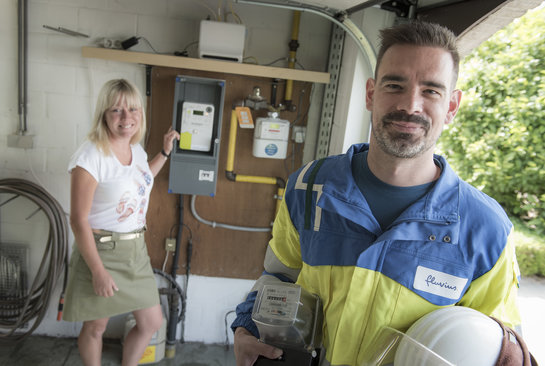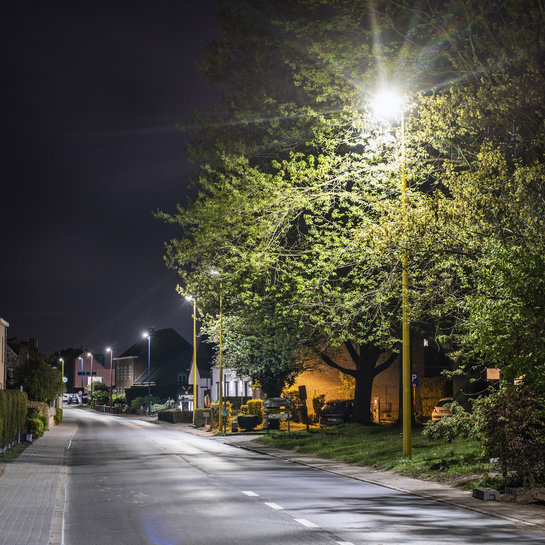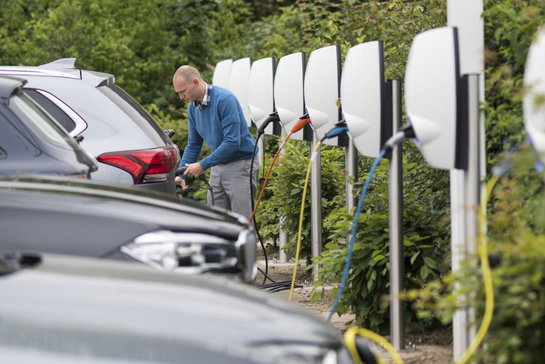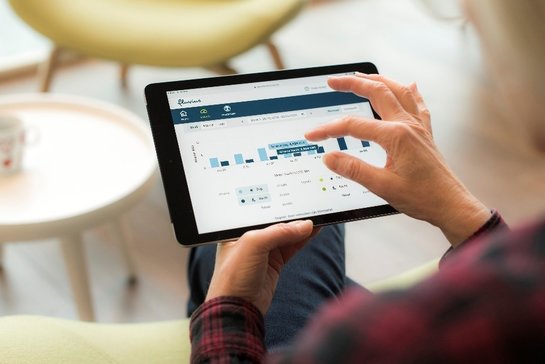The energy landscape in Flanders is currently undergoing a major shift. Global warming is forcing us all to think differently about energy. Not only must we invest more in renewable energy, we must also make smarter use of the energy that is already available. Only in this way can we ensure that we do not face shortages in the future.
At Fluvius, we understand that as a grid operator we have a crucial role to play in this. Not only must we continue to improve the ecological footprint of our own infrastructure, we must also enable and support sustainable initiatives and evolutions among Flemish households and companies. But it doesn't stop there.
Using less energy together
First and foremost, together with all of Flanders, we must use our energy more economically. In this way, even with the growing electrification of our society, we can ensure that there is enough energy for everyone and reduce greenhouse gas emissions far and wide. The premiums for insulation and energy-saving devices are, of course, no longer news, but we are also going much further.
The digital meter as a tool
Measuring is knowing. So the digital meter, linked to the consumption portal mijn.fluvius.be (only available in Dutch), should give the more than six million people in Flanders a better insight into their own energy consumption and thus give them the means to make adjustments where possible. Moreover, the user portal allows you to connect other devices to it to regulate your consumption even better.

Public LED lighting
For several years now, we at Fluvius have been converting all 1.2 million lighting points along Flemish roads to energy-efficient LED lighting. Moreover, a large part of these are interactive. This allows cities and municipalities to dim or extinguish lights on certain parts of their territory during the quietest hours of the night to save even more energy.
Although the conversion to LED lighting was initially planned to be completed in 2030, we are already aiming for 2028. By that date, the energy-efficient fixtures will together save as much as 44 000 tonnes of CO2 emissions per year.

Renewable energy
When we think of greenhouse gas emissions, we inevitably think of burning fossil energy sources such as natural gas and oil products. Therefore, we try to switch to renewable and environmentally friendly energy sources such as solar panels, wind turbines and heat networks as much as possible ourselves, and help others to do the same. We are also looking at the possibilities of biomethane and hydrogen as alternatives to natural gas. An overview of the share of renewable energy in the Belgian energy market can be found at Green Grid Compass.
Heat, just what you were looking for
A lot of energy is still lost in Belgium. At installations such as incinerators or other industrial processes that release a lot of heat, a lot of heat often escapes unused through the chimney. By connecting those installations to a heat network, we can use that residual heat to heat hundreds of buildings in the area. In other places, we use heat sources deep underground to supply homes with renewable energy. Although the number of heat projects in Flanders is currently still limited, we at Fluvius are constantly looking for opportunities that are ecologically, economically and socially feasible to apply or help apply this technology.
The future of hydrogen
As we phase out the use of natural gas, we need to find a replacement for it. For a number of applications, green hydrogen (derived from a renewable source) is an interesting contender, although building a hydrogen grid is not obvious and quite expensive. Moreover, you cannot simply switch a natural gas grid to hydrogen overnight. Given that such a grid in an average residential area has a large number of customers with a wide variety of customer profiles, it would make such a switch - as things now stand - extremely complex. Although we continue to look for solutions to this. With industry, that argument is much less valid. Business parks and industrial clusters typically contain a limited number of customers with similar customer profiles. A complete grid switch from natural gas to hydrogen is therefore a lot more feasible in those areas and certainly offers opportunities for a more sustainable future.
Flemish grids future-proof
First and foremost, together with the whole of Flanders, we must use our energy more economically. That way, even with the growing electrification of our society, we can ensure that there is enough energy for everyone and we will reduce greenhouse gas emissions significantly. Premiums for insulation and energy-saving devices are, of course, no longer news, but we are also going much further.
On to more electric cars
Electric driving is on the rise. Moreover, the trend will only continue in the coming decades. To the extent that we expect all passenger transport in Belgium to be electric by 2050. Of course, all those car batteries have to get charged. This obviously poses a challenge for our electricity grids. Currently, we have sufficient capacity in Flanders to cope with an initial influx of charging infrastructure. But because this capacity may no longer be sufficient in the future, we are investing heavily in our distribution grids between 2020 and 2050.

The sponge and the energy community
A power grid used to look much simpler. All energy flowed in one direction from the power station to the customer, just as in a tree everything flows from the root to the leaves. Today, we are moving more towards a sponge structure, where renewable energy is absorbed from all sides. And so we are restructuring our grids. Important in this is to use locally generated electricity as much as possible at the location itself, to reduce its transportation. And so we encourage our customers to join together in energy communities, where neighbours, family members or branches of an organisation exchange their self-generated energy with each other. To make all that happen in a structured way, the digital meter is already crucial. Moreover, the data from these devices help us to respond quickly to the broad and sometimes highly fluctuating energy mix through automation and to keep our grids among the world's best-performing in the future.
New opportunities for our customers
With new challenges and associated solutions, also come new opportunities that we are happy to put at the service of our customers.
Better information
With the huge amount of data on our customers' energy consumption and the load on our infrastructure, we have an accurate view of our grids more than ever before. With this, we want to inform market players more clearly about the grid load, enabling them to use any free capacity for, for instance, charging infrastructure, wind turbines or additional solar panels. In this way, we save society costs and can offer customer connections more affordably.

Rational use of energy
If everyone switched on all electrical appliances in the house at the same time, it would cause an immense peak on the power grid, making power outage inevitable. Even to a lesser extent, such a peak could become problematic. For example, suppose we all get home from work around 5pm and all want to charge our electric car at the same time. Therefore, it is important to spread our consumption and reserve that kind of non-time-related consumption for the quieter moments, when there is much more energy available. The digital meter, linked to smart applications and using our customer portal, makes that possible.
Conclusion
The energy transition is well underway, but will still require a lot of effort from Fluvius, local governments, businesses and citizens alike to keep our environment liveable. Fortunately, we have the means, the alternatives and the goodwill to tackle this challenge.